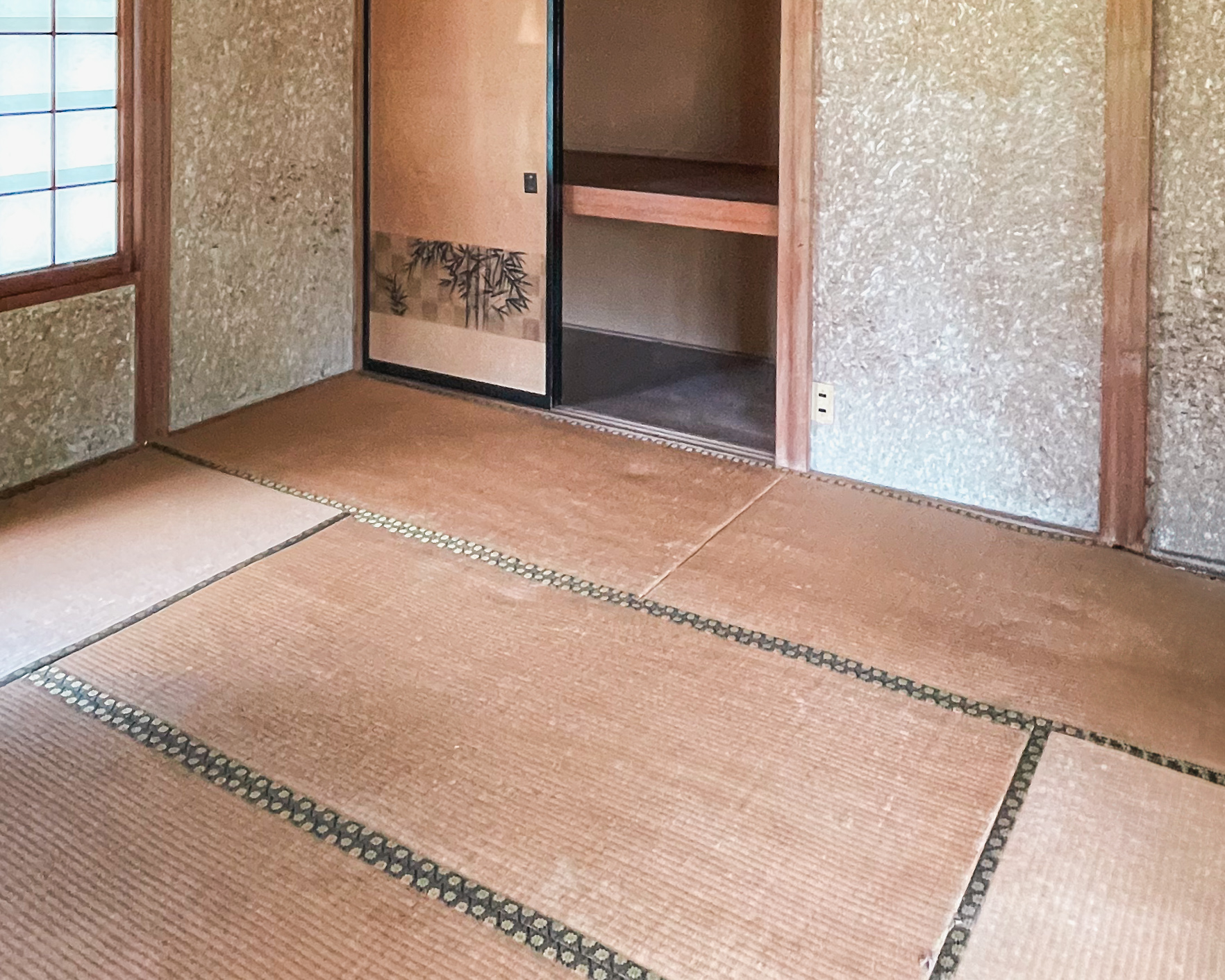In Japan, traditional units are still commonly used in construction and real estate. Three key units are “tatami / jō” (畳), “Tsubo”(坪) and “shaku” (尺).
What Is a Tatami Mat?
A tatami (畳) is a traditional Japanese floor mat made of woven straw and covered with soft rush grass. It’s not just a flooring material — it’s a key part of Japanese interior culture.
Tatami Size & Room Measurements
A single tatami mat is approximately 0.9m x 1.8m (in most regions — called the Kantō size).
In Japan, room sizes are often described by how many tatami mats fit inside.
For example
- “6畳” (roku-jō) = a 6-tatami room
- “4.5畳” (yo-jō-han) = a 4.5-tatami room
Even in modern homes, the tatami count is still used to describe space, but especially in older or traditional houses, like akiya.
Understanding this helps when renting, buying, or renovating Japanese properties.
What is Tsubo (坪)?
Tsubo (坪) is a traditional unit used to measure area, especially for land and property.
If you’re buying or renovating a home in Japan — especially older properties like an Akiya — you’ll definitely see “tsubo” in blueprints, estimates, and listings. Also when you buy the paint or other products, they will likely include the number tsubo the product can be used on.
Understanding this traditional unit will help you plan more accurately and communicate better with Japanese contractors.
1 Tsubo = 2 Tatami Mats
- 1 tsubo is approximately 3.3 square meters (or 35.5 square feet).
- A quick way to visualise it: 1 tsubo = 2 standard tatami mats.
What is Shaku (尺)?
In Japan, most standard plywood and plasterboards are sized at 1820mm x 910mm.
This may seem like a random size, but it’s actually based on the traditional Japanese unit of measurement: the shaku (尺).
Shaku – Traditional Unit of Length
- 1 shaku ≈ 30.3 cm or 0.994 feet
- 1820mm = 6 shaku
- 910mm = 3 shaku
Because of this, when installing floors or walls in a Japanese home, it’s important to space the framing (joists or studs) to match these dimensions.
Doing so ensures that the panels fit perfectly, minimising waste and making installation more efficient.
If you’re renovating an Akiya or working with traditional Japanese construction techniques, keeping this in mind can save time—and headaches!



